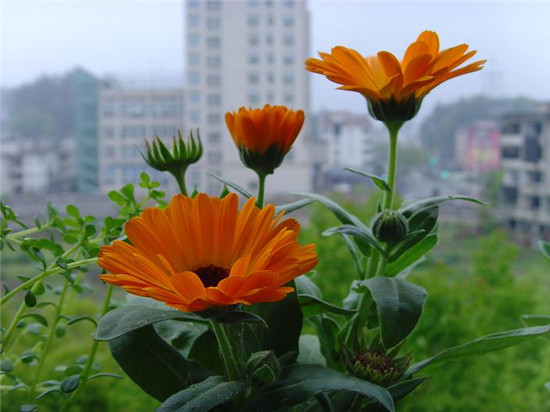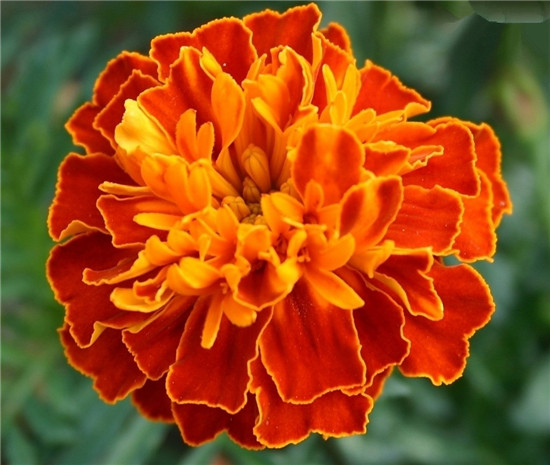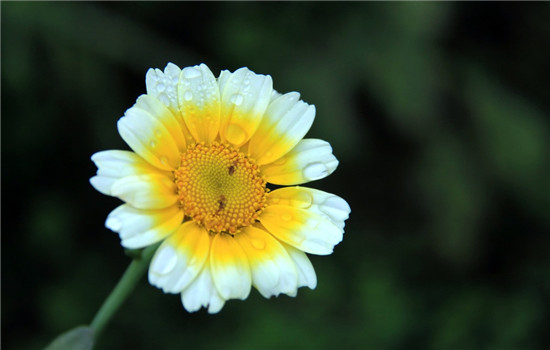The basic introduction of Little Daisy
Small daisies are often called small sunflowers. Daisies, also known as protracted daisies in Europe, are perennial herbs in the Compositae family. Next, let's take a look at the basic introduction of small daisies.

Characteristic description of Little Daisy
Often autumn sowing for 2-year cultivation (spring sowing for annual cultivation in alpine areas). The plant height is 15-20 cm. Leaves basally fascicled, spatulate. Capitate inflorescences solitary, flowers 3-5 cm in diameter, ligulate flowers striate. There are white, pink, red and other colors. There are usually about 10 flowers per plant. The florescence is from March to June. Daisies are cold-resistant and suitable for cool climate. It is easy to die if it blossoms poorly under hot conditions. It can be sown and propagated in the open field seedbed in mid-August or early September. After sowing, it is appropriate to use Reed curtain to shade, not covered with film.
All the seedlings come out and the curtains are removed. When two or three leaves are planted for the first time, the bare roots do not take the persistent soil, and the border soil needs to be moist and watered in time. If necessary, the Reed curtain shades the seedlings for two or three days, and the soil can be watered again when the soil is dry. Two days later, loosen the soil to preserve moisture and squat seedlings. When the seedlings produce 3-4 true leaves, transplanting with soil blocks once or twice can promote a large number of lateral roots and prevent overgrowth. Apply appropriate amount of base fertilizer in the border. In the coming year, the plant shape is short and strong, the stress resistance is strong, and the flowers are big, plump and colorful. At the end of October, it was watered once, and when the border soil was not sticky or loose, it began to hoard people's sunny beds to survive the winter, and covered with mats at night to prevent the cold.

Daisies are cold in winter, but they are afraid of frost and air drying. The thickness of the mat and the removal time will be controlled flexibly depending on the growth of the seedlings and the cold and warm weather, so as to prevent overgrowth and effectively control the florescence. After one or two transplants in autumn, flower beds can be directly planted in spring when they see flowers. For those who have not been transplanted by inverted border after dividing seedlings in autumn, it is appropriate to plant in the flower bed or go out of the nursery to list in spring after the border with sufficient base fertilizer is preserved and formed.
When planting, apply rotten leaf fertilizer or stable as base fertilizer. After planting, it should be watered every 7-10 days. During the growing period, daisies like to have plenty of sunshine and are not tolerant to shade. After daisies are sowed in autumn to promote strength, if there is no seedling transplant, the seedlings can be raised at the end of October, separated, and the roots will bring a little bit of persistent soil, and then grab a handful of moist and fertile soil containing more humus and slightly sticky, and the two seedlings will be clutched into a lump in the center of the loam, stored in the yang border in turn, sprayed and moisturized, so as to promote the hair of the beard root, grow small and strong, and it is not easy to wilt directly in the flower bed or on the market in spring.

The legend of the little daisy
Since ancient times, Christianity has had the habit of connecting saints with specific flowers, because the church often decorates the altar with blooming flowers when commemorating saints. In medieval Catholic monasteries, all kinds of flowers were planted like a horticultural center, which was very suitable for planting flowers and plants. Daisies are the flowers of St. Marguerite, a Hungarian princess who entered the monastery after refusing her father's chosen husband in the 13th century.
Through a piece of peeled petals, in the heart, love me, do not love me. Until the last petal, which represents the heart of the lover. Therefore, its fancy language is pure love.

Those who are born with the blessings of this kind of flowers will have a heart as innocent as a young girl all their lives. Love will probably be both flawless and beautiful!
The above is the whole content of the basic introduction of the little daisy that I have summarized for you. I hope this article can help you. Please continue to follow us.
Related
- Wuhan Hospital Iron Tree Blooming Result Was Instantly Frightened by the Gardener Master
- Which variety of camellia is the most fragrant and best? Which one do you like best?
- What is the small blue coat, the breeding methods and matters needing attention of the succulent plant
- Dormancy time and maintenance management of succulent plants during dormancy
- Minas succulent how to raise, Minas succulent plant pictures
- What are the varieties of winter succulent plants
- How to raise succulent plants in twelve rolls? let's take a look at some experience of breeding twelve rolls.
- Attention should be paid to water control for succulent plants during dormant period (winter and summer)
- Watering experience of twelve rolls of succulent plants
- Techniques for fertilizing succulent plants. An article will let you know how to fertilize succulent plants.



